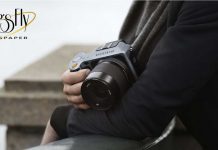Bob Lee
2nd February 2016
We have all watched the pro’s use their light-meter.
What drives that professional photographer to use the light-meter? Almost every camera today unpacks out of the box with a light meter built in. So why do they bother? Great photographs requires the Mastery of Light
Great photographs requires the Mastery of Light
A huge step forward with an almost intuitive user face. The L-478-series meters take the mystery out of mixing ambient light and flash. Touch to select the measurement mode that fits your shooting style. Measure the brightness of a single light or the exposure for all. Read flash colorlessly or with a cord. Touch to compare, analyze and display exposure data for the very best results.
Keeping pace with wireless advancements, the L-478DR-U models come complete with radio triggering technology for photography’s most popular triggering systems*. Combining light measurement and wireless remote flash triggering into a hand held light meter has resulted in a sophisticated and simple tool for photographers who choose to craft light, and not just record it.
Call it a dashboard for light. The Litemaster Pro L-478 series meters power-up with the world’s first color, touchscreen display that invites you to explore their significant capabilities and encourage you to explore the possibilities of light.
Exposure information is presented on a large, easy-to- read LCD. Want to change something? Simply touch or move your finger across the screen. Already own a touchscreen device? We’re sure you’ll feel like you’ve been using it for years.
What is the difference between Incident and Reflected Light?
Incident light measures the light falling on your subject and how light or dark the subject is has no affect on the exposure reading.
Reflected light measures the light reflecting off your subject, and the color and value (how dark of light your subject is) affects your reading, requiring evaluation and experience to accurately apply this information.
In terms of speed, incident is the faster way to get an accurate, ready-to-shoot exposure of a subject in the same light or shade in which you stand. Reflected readings are very useful when your subject is in shade and you are not, or vice versa – but again, the reading you take with reflected can only be “ready-to-shoot” if you are indeed pointing at something that is “middle gray” in value.
How to Measure Incident Light
Incident metering tells you about the light you are controlling. The Sekonic Litemaster Pro L-478 Series light meters’ Lumisphere (hemisphere receptor) is designed to read all of the illumination that falls on it, and the subject, including the key light, line light, hair light, eye lights, etc. Besides taking nearly foolproof exposure readings, this enables you to set up and light a scene before the principal talent arrives, saving time and adding to your presentation as a professional. You can also “walk the set†to measure the evenness of the illumination and perfectly light green screens.
The L-478 Series offers the convenience of a retractable Lumisphere. Retract the Lumisphere to read individual light sources to adjust them to the desired ratio, or read the flat subject. Extend it to take an exposure reading for 3-dimensional subject position.
The first time you use an incident meter is one of those “a-ha!” moments. Once you take a reading with the lumisphere, set the camera to same and find that your exposure is right on, we bet you will wonder how you ever lived without it!
Basics of Metering
Times when you should ignore your camera’s light meter. You know the rest
Don’t forget your ColorChecker when striving for a more accurate, consistent color with creative flexibility.
Color Control and Creativity for Photography – from Capture to Edit
Reduce your image processing time and improve quality control in your Raw or JPEG workflow with the powerful color capabilities of the ColorChecker. Quickly and easily capture accurate color, instantly enhance portraits and landscapes, and maintain color control and consistency from capture to edit.
























